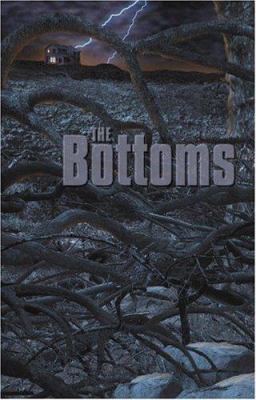
by Joe R. Lansdale
Library Journal
: A trip into the woods proves a learning experience for 13-year-old Harry in this latest coming-of-age mystery yarn from Lansdale (Freezer Burn). When Harry and his sister Thomasina (Tom) strike out into the woods, they confront not only the myth of the Goat Man, who is said to inhabit those woods, but also some myths about the nature of justice and race in their 1930s East Texas community. Finding the dead and mutilated body of a black prostitute is only the first discovery along the road to growing up, though. As the body count mounts, the only solution open to the challenged community is to make an old black man into the scapegoat, though he is obviously incapable of the grisly killings. This leads to a satisfactory but untidy resolution from which Harry emerges as sadder but wiser. The book, a combination of William Faulkner's Intruder in the Dust and Harper Lee's To Kill a Mockingbird (with a sizable portion of pure Lansdale thrown in), just might at long last bring premier storyteller Lansdale to the attention of an even broader audience. For all public libraries. Bob Lunn, Kansas City P.L., MO Distributed by Syndetic Solutions Inc. Terms
Publishers Weekly
: In his latest suspense thriller, prolific yarn-spinner Lansdale, best known for his offbeat series featuring the mismatched East Texas Sherlocks Hap Collins and Leonard Pine (Bad Chili), presents a different voice in a coming-of-age story set in the early years of the Great Depression. Lansdale's 80-something protagonist, Harry Crane, looks back to the day in 1933 when he was 13 and, with his nine-year-old sister, Tom (Thomasina), he found the mutilated corpse of a black prostitute bound to a tree with barbed wire near their home along the hardscrabble bottomlands of the Sabine River. The discovery presents their father, Jacob Crane--a farmer and barber eking out a living as the town constable--with a nightmarish investigation. News travels slowly in the days before television, but Jacob learns from the black doctor who performs the makeshift autopsy that two other mutilated bodies have been found over the last 18 months. Because the victims are black and "harlots," no one in the county much cares. But when the body of a white prostitute is discovered, a rabid mob lynches Moses--a black man who has been something of a surrogate father to Jacob--despite Jacob and Harry's heroic efforts to save him. Predictably, another body is soon discovered. Lansdale is best when recreating the East Texas dialogue and setting. Readers will not have to work hard to unearth comparisons to characters in To Kill a Mockingbird, but gruesome details of the murders keep the novel from being labeled a period piece. Folksy and bittersweet, though rather rough-hewn and uneven, Lansdale's novel treats themes still sadly pertinent today. (Aug.) Copyright 2000 Cahners Business Information, Inc. Distributed by Syndetic Solutions Inc. Terms
School Library Journal
: Adult/High School-This thought-provoking book portrays an accurate, disheartening picture of old-time Southern bigotry. Harry Crane, now an elderly resident of a nursing home, recalls a watershed event from his childhood in East Texas in the 1930s. The narration begins when he, nearly 12, and his 9-year-old sister discover the mutilated body of a black woman tied with barbed wire to a tree in the Bottoms, the swampy forest wilderness supposedly stalked by the "goat man" in search of children to eat. Harry's father, a small farmer, barber, and constable, begins an investigation into what turns into a series of mutilation murders of black women. Hostilities become palpable when the fear that a "white woman may be next" begins stirring in the town residents. Jacob Crane, a reasonable man trying to cope with an investigation beyond his skills and the unreasonable bigotry of his neighbors, faces a crisis that nearly destroys his family. The story is compelling, in a manner similar to Harper Lee's To Kill a Mockingbird. In fact, there are many parallels to that story, in the lessons learned by Harry as to what makes a monster, what really constitutes monstrous acts, and what being a hero really means. Harry also learns of the deep reserves of strength in himself and in his family. This is a wonderful book that will capture and educate young adults about a shameful time in this country's history and the strength of an individual to make a difference.-Carol DeAngelo, Kings Park Library, Burke, VA Copyright 2001 Cahners Business Information, Inc. Distributed by Syndetic Solutions Inc. Terms
|

